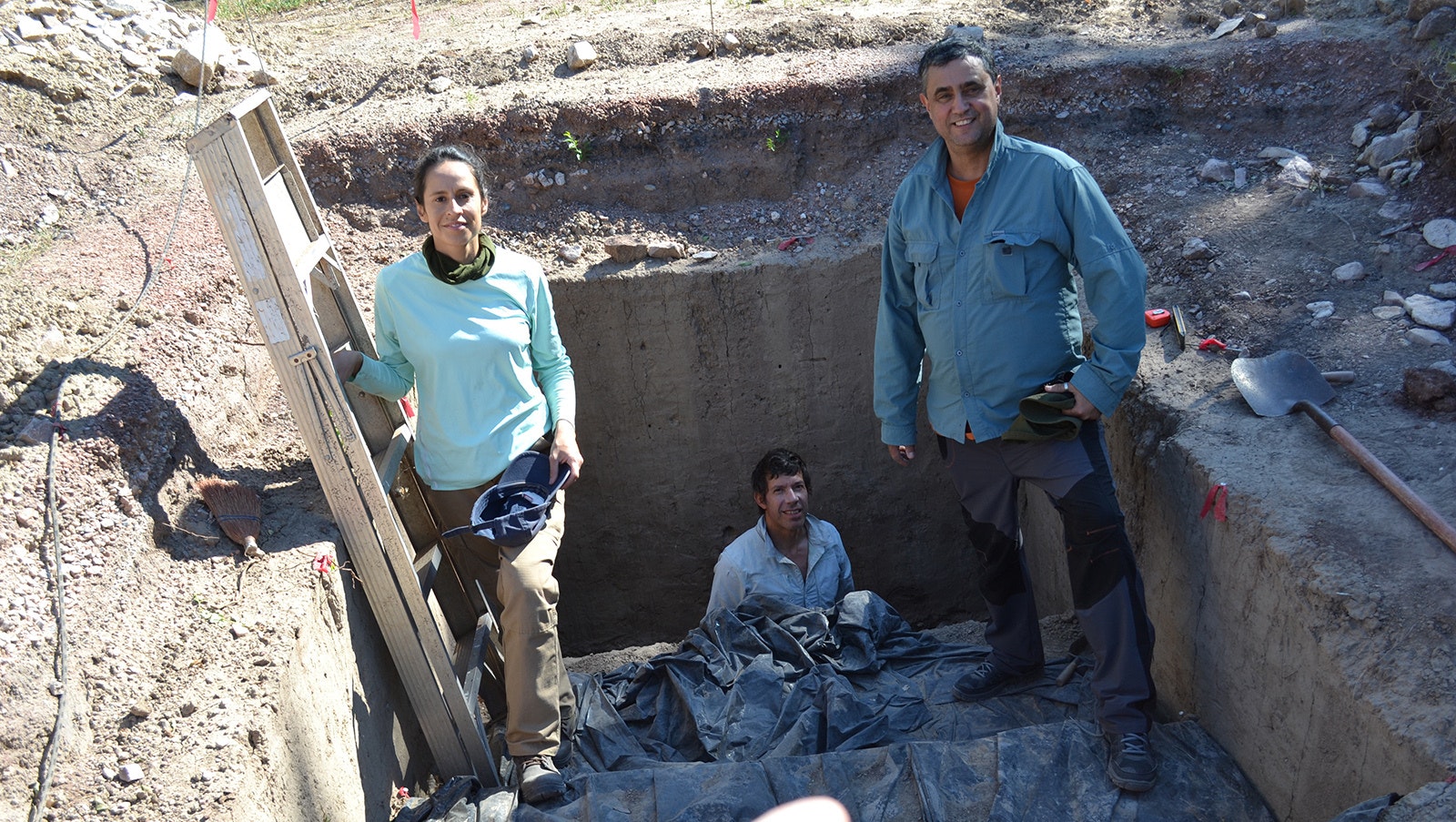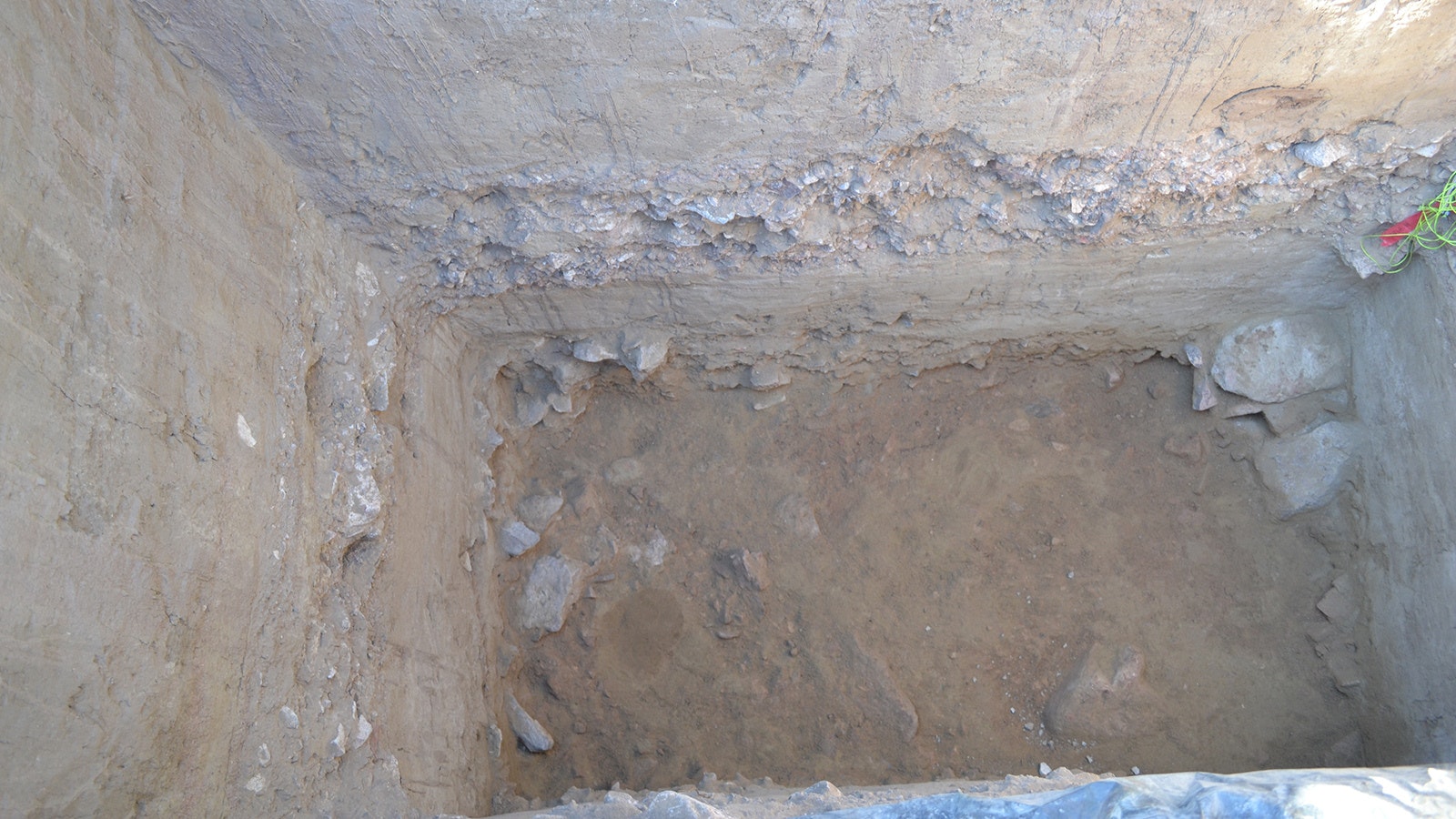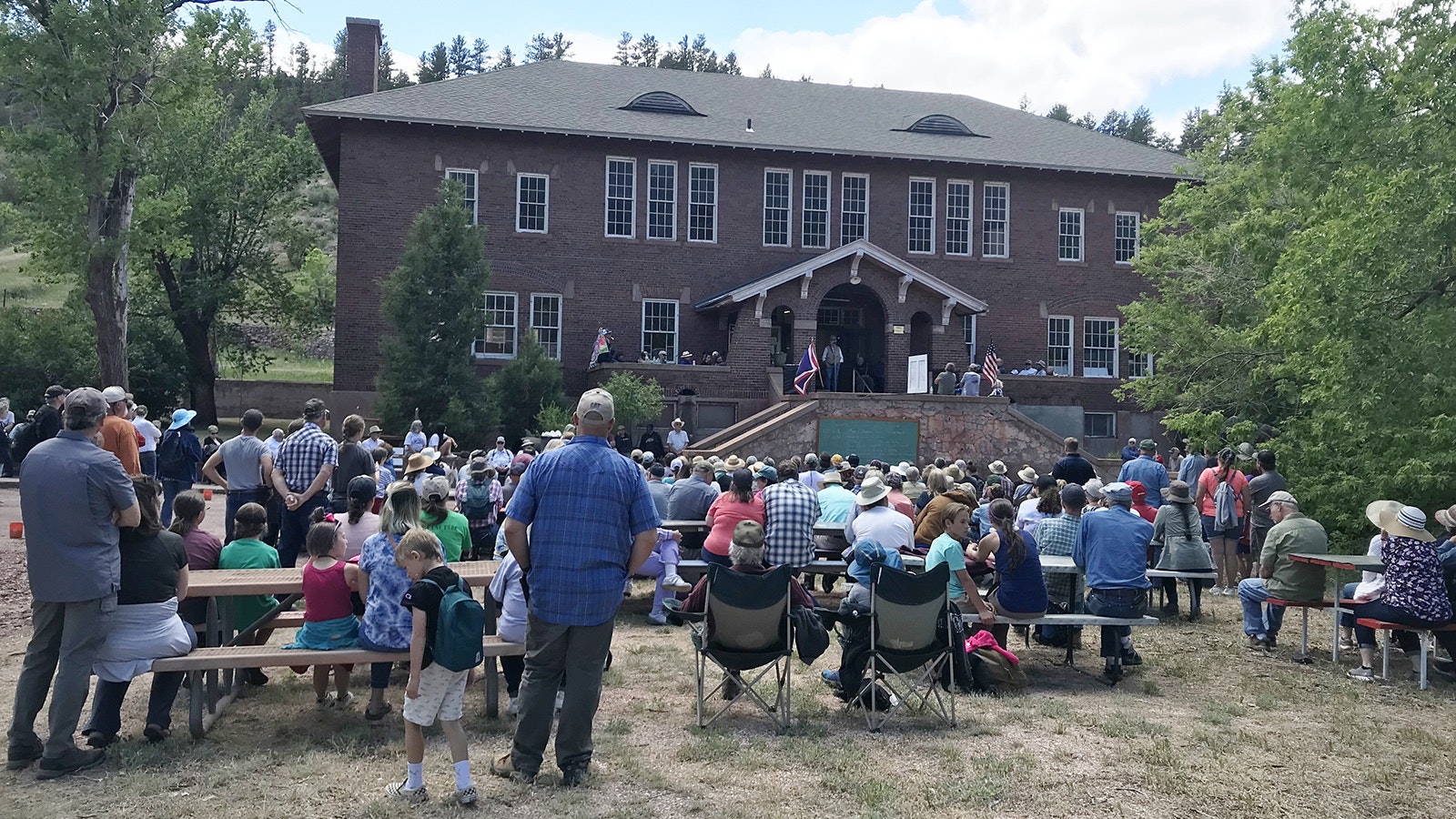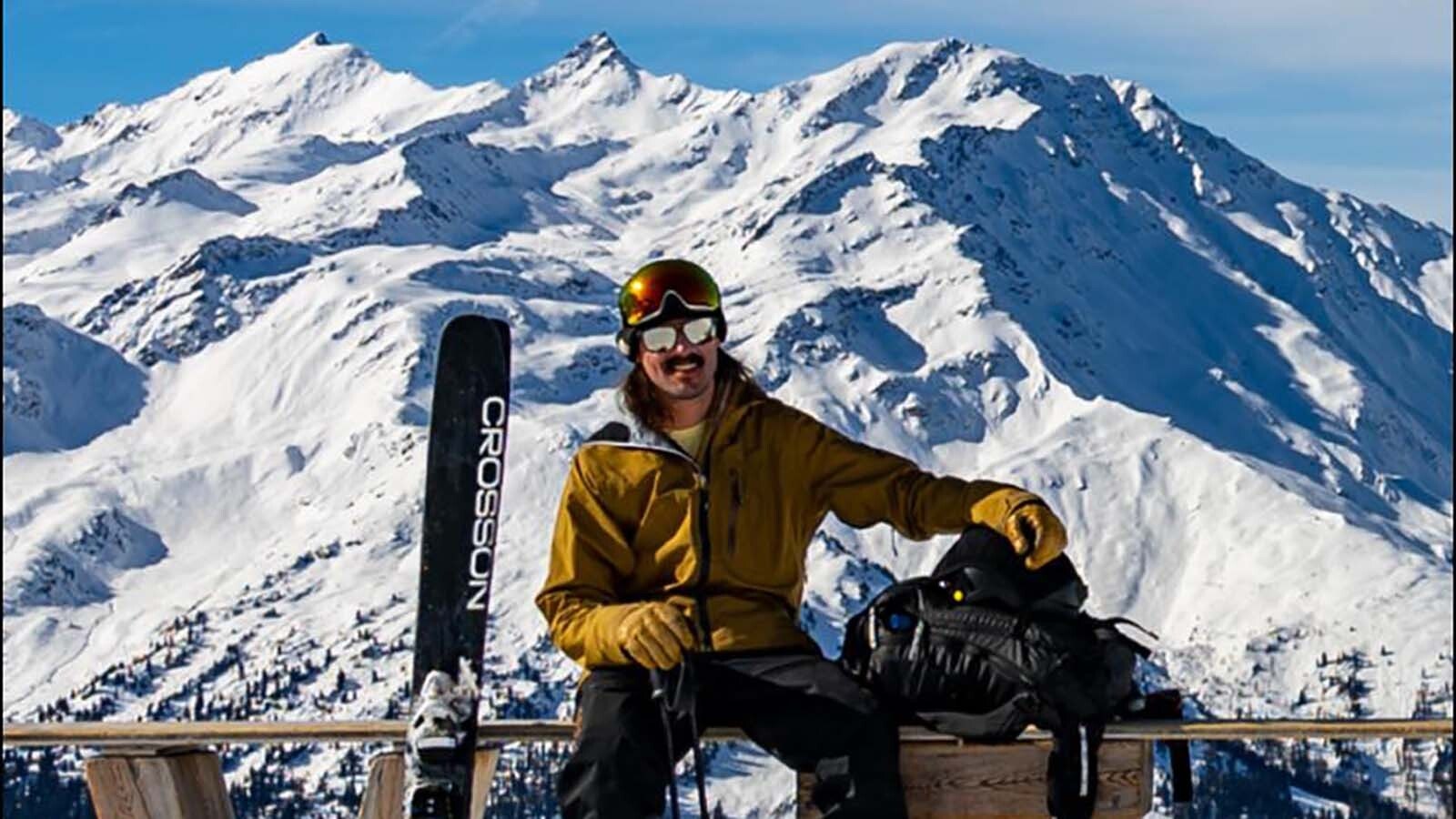The Powars II Paleoindian archaeological site continues to reveal surprises for the teams that are working there. The latest and greatest find are implements that researchers there say predate prehistoric Clovis people in Wyoming.
“We’ve got two dates on (the site) now that are 14,000 years, and that makes them the oldest dates in the state of Wyoming associated with cultural materials,” archaeologist George Zeimans told Cowboy State Daily. “There are other sites in North America with old dates like that, too, but this is the first time we’ve had them, and that’s older than Clovis.”
The finds could go a long way toward settling a scholarly debate that’s raged for years about whether there are any sites older than Clovis in Wyoming.
In the midst of this new discovery, Zeimans said that the Sunrise Historic and Prehistoric Preservation Society (SHAPPS) has also formed a partnership with Eastern Wyoming College, which won a grant of several hundred thousand dollars to facilitate hiring an archaeologist and geologist.
The college “is going to start offering classes and a field school, and the field school will be at Sunrise,” Zeimans said. “So, we’re forming a partnership with EWC, and it’s great.”
SHAPPS, meanwhile, will renovate the YMCA at Sunrise, board member John Voight told Cowboy State Daily. He has donated that facility to the effort.
“This helps ensure the long-term study and protection of the site,” Voight said in an email. “And it allows us a chance to put a great, old building into new service to academics, tourists, schools, etc.”
Who Were The Clovis People?
A set of ancient, fluted spearheads were discovered by an amateur archaeologist in Clovis, New Mexico, which led to the discovery of the Clovis people. They were long thought to be the oldest culture of prehistoric man.
The Clovis people lived in what is now present-day New Mexico amid lush grasslands populated with mammoths, giant bison, dire wolves, camels, gigantic turtles and ground sloths, as well as the terrifying saber-toothed tiger.
Their flint projectiles, discovered in Clovis, were found in relation to the bones of extinct mammoths that once stood 14 feet high and weighed 8 to 10 tons. Archaeological experts say each of these behemoths could have eaten more than 700 pounds of vegetation daily.
While Clovis obviously did hunt big game, experts believe they were opportunists, rather than exclusively big game hunters. They would have taken advantage of whatever nature provided, whether that’s edible seeds and nuts, roots, fishing, small mammals, and birds.
Little is known about Clovis man, though thousands of their spear points have been discovered across North America. The clothing and other items made of soft organic materials, which might have told more about their culture, do not lend themselves to preservation.
The Clovis people seemed to have moved from the New Mexico area after the disappearance of large animals, which some researchers have speculated may have been caused by a meteor impact in Canada.
The Powars II site, meanwhile, has around 80 projectile points so far, Zeimans told Cowboy State Daily, including points that are somewhat different than Clovis. These have been named Sunrise points.
“There are no good dates yet on that projectile point style,” Zeimans told Cowboy State Daily. “There are other places it’s been found. It’s been found in North America mainly up in Montana, North Dakota and southern Canada, but nobody has a firm date at this point.”
Finding a firm date for the Sunrise points is a major objective for researchers working at the Powars II site.
A Big Breakthrough
One problem with sorting out the date of the Sunrise projectile points found at the Powars II site is that there has been significant mixing of layers in so many areas of the site.
“It’s a trench, about 10 feet wide,” Zeimans explained. “(You had) one group coming in, digging, making their offerings, and then the next group coming in and digging through their stuff. So, it’s all mixed. We’ve got some dates, but they’re not directly associated with any particular artifact down there.”
The same was true also of the surface of the valley floor, where a lot of the artifacts were mixed in with historic railroad and mining debris.
The steepness of the slope, however, suggested that the people using the red ochre mine, which is among the oldest Paleoindian red ochre mines in North America, must have been camping somewhere else.
“There was no way you could camp next to that (mining) feature,” Zeimans explained. “So, we figured they must be camping on the valley floor below.”
It required quite a bit of digging, Zeimans said, but sure enough, about 10 feet below the historic disturbance caused by the mining and railroad industries, there are layers of Sunrise artifacts that have not been touched for thousands of years.
“You get down below (the disturbance) and we’ve got this old stuff that’s still in place,” Zeimans said.
That was the big breakthrough that allowed researchers to identify items with dates older than 14,000. More information about that find will be published in a book coming out soon about the Powars II site.
This summer, meanwhile, researchers from Brazil will be coming to build on that discovery to hopefully learn more about the Sunrise points and the people who lived there.
Another Big Discovery
Another of the discoveries Zeimans is excited about is that of a quarry with a new kind of tool stone, which is what researchers call the raw material that stone tools were made out of. The tool stone is a type that hasn’t been identified anywhere else, Zeimans said.
“It’s much older,” he said. “Most of the tool stone that the area’s really famous for is much more recent in time. Like 15, 20 million years. This stuff is Precambrian in age. It’s billions of years old. And we’ve never seen it anywhere before.”
About 60% of the points found up in the red ochre mine were made of that material, Zeimans said.
“So not only do they have the red ochre mine, but a real important tool stone quarry right down below the ochre mine,” Zeimans said. “And because we’ve never seen this material anywhere before, now what we’ve got to do is go back to some of the earlier sites.”
Stone tools found there will be reanalyzed with this new tool stone discovery in mind.
“Every time you turn around, there’s something new and exciting up there,’ Zeimans said. “It’s just fantastic. A really, really great site.”







